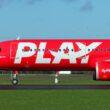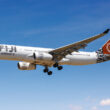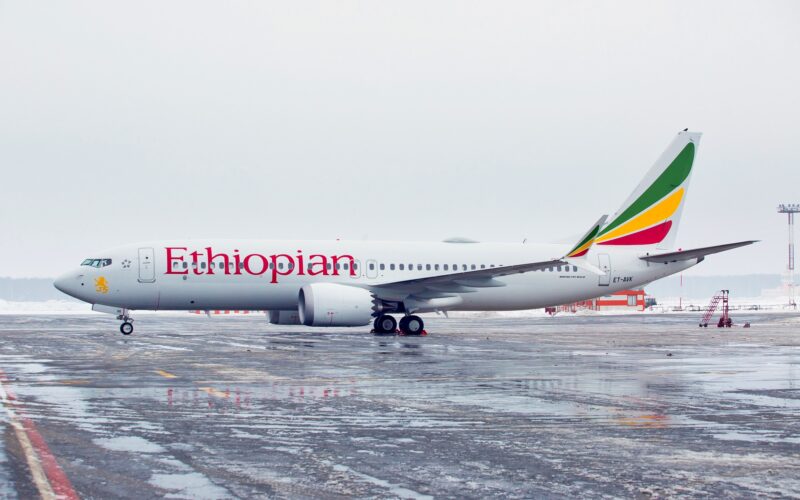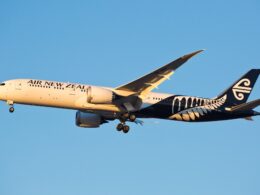The National Transportation Safety Board (NTSB) publicly criticized the Ethiopian Aircraft Accident Investigation Bureau (AIB) for omitting its final comments in the recently-published final report of the fatal Ethiopian Airlines Boeing 737 MAX crash.
The Ethiopian investigators released the report on December 23, 2022. The US-based investigators saw a draft version of the report, as it is customary for the investigators of the country where the aircraft is manufactured to be involved in the investigation.
However, the NTSB pointed out that the final report linked to an outdated version of its comments. Thus, the US agency had to take an “unusual step” and publish its final comments on its website publicly. According to the NTSB, it received the AIB’s final report on December 27, 2022, four days after it was initially published by the Ethiopian investigators.
The US accident investigators also pointed out that per the International Civil Aviation Organization’s (ICAO) Annex 13, “countries participating in the investigation are provided the opportunity to review the draft report and provide comments to the investigative authority”.
“If the investigating authority disagrees with the comments or declines to integrate them into the accident report, participating countries are entitled to request that their comments be appended to the final report,” continued the NTSB’s press release.
Exchanging opinions on the 737 MAX crash
According to the NTSB, the Ethiopian authorities provided an initial draft of the report in 2022, which the US investigators reviewed and commented.
The NTSB believed that “several aspects of the accident” were inadequately focused on, primarily human factors. After the AIB reviewed the comments, they provided a revised report, which still failed to address the US safety authority’s remarks.
“Instead of incorporating the most recent and expanded comments into their report, or appending them as had been requested, the EAIB included a hyperlink in their final report to an earlier and now outdated version of the NTSB’s comments,” stated the US investigators, also pointing out that the final report “included significant changes” compared to the version they last saw.
On the other hand, the Ethiopian authorities indicated that Boeing, the Federal Aviation Administration (FAA), and the NTSB failed to point out engineering errors related to the 737 MAX. The AIB noted that once Boeing informed the NTSB about an “engineering design error in their initial AOA [Angle Of Attack – ed. note] Sensor Hazard Analysis”, neither of the three parties forwarded the information to the Ethiopian authorities.
Debating the cause of the accident
Ethiopian authorities concluded in their final report that the only probable cause of the crash was the repeated nose-down movements made by the Maneuvering Characteristics Augmentation System (MCAS). However, the NTSB wanted to add two additional causes why the Boeing 737 MAX plunged into the ground in Ethiopia.
The US agreed that the MCAS was part of the cause of the crash, yet they believe that “the probable cause also needs to acknowledge that appropriate crew management of the event, per the procedures that existed at the time, would have allowed the crew to recover the airplane even when faced with the uncommanded nose-down inputs.” As such, the probable cause of the accident would include MCAS inputs due to erroneous AoA data, as well as the flight crew’s “inadequate use of manual electric trim and management of thrust to maintain airplane control”.
Furthermore, while the Ethiopian AIB published 10 contributing factors, the NTSB wants to add two additional factors. Firstly, Ethiopian Airlines’ failure to include procedural information on how to respond to uncommanded nose-down movements, which were outlined by Boeing’s Flight Crew Operating Manual (FCOM) and the FAA’s Airworthiness Directive (AD), both of which were published four months prior to the crash. Secondly, the Boeing 737 MAX impacted a foreign object that damaged the AoA sensor, resulting in several erroneous activations of MCAS.
Ethiopian investigators found that the “new Airplane experienced unexplained electrical and electronic faults within weeks of entering service, and in the weeks and days prior to their accidents”. Boeing delivered the 737 MAX in November 2018, four months before the accident occurred in March 2019.
Omitting key details about the 737 MAX and the local airport
Several other airframe and system aspects were omitted from the final report, according to the NTSB.
The US investigators pointed out that while the AIB was right that erroneous AoA data was provided to the aircraft’s systems due to the sensor’s failures, they did not provide the root cause of it: damage from impact with a foreign object or bird. As such, the “report misses the opportunity to address improvements for wildlife management at the flight’s departure location,” Bole International Airport (ADD) in Addis Ababa, Ethiopia.
The AIB did consult with Collins Aerospace, the manufacturer of the sensor.t However, the NTSB pointed ou that the report “does not acknowledge Collins’ fault tree analysis, which demonstrated that the recorded FDR data from the accident were not consistent with any internal failure of the AOA sensor; instead, those data were fully consistent with previous instances of partial AOA vane separation due to a bird strike.”
The final report also stated that local inspectors did not want to explore the potential hazards and recommendations regarding bird activity at ADD. Yet in another incident in which an Ethiopian Airlines 767-300 suffered an engine failure in November 2018, the AIB concluded that there was a bird strike hazard at the airport.
The NTSB’s response to the final report also added that while the Ethiopian investigators questioned the functionality of the manual electric trim system, it did not present facts to support these findings. Boeing’s later assessment “found that no trim system failure scenarios were consistent with the FDR [Flight Data Recorder – ed. note] data and that the behavior of the electric manual trim parameter recorded on the FDR was consistent with flight crew input”.
Additionally, the AIB provided two factually incorrect statements: that the FAA’s design changes to the 737 MAX-8 were unofficial and had no final approval, and that Boeing failed to properly respond to Ethiopian Airlines’ request for more information about the MCAS following the Lion Air 737 MAX crash in October 2018. Per the NTSB, Boeing provided specific guidance on how to deal with uncommanded stabilizer trim movement on December 3, 2018, supplementing its previously-issued operations manual bulletin (OMB) to all operators of the type.
Ethiopian Airlines crew performance
US investigators voiced their concern that the AIB did not discuss the flight crew’s performance, including Cockpit Resource Management (CRM) throughout the report, despite their input playing a key role in the crash.
“The absence of flight crew performance information limits the opportunity to address broader and equally important safety issues,” read the NTSB’s publication, also mentioning that data was readily available to analyze the pilots’ performance throughout the flight.
“As we have reiterated throughout the investigation, design mitigation must adequately account for expected human behavior to be successful, and a thorough understanding of the flight crew’s performance in this accident is required not only for robust design mitigations but also for operational and training safety improvements necessary to achieve multiple layers of safety barriers to trap human errors and prevent accidents,” continued the US investigators.
In its report, the AIB questioned whether the Indicated Airspeed (IAS) Disagree and Altitude (ALT) Disagree alerts appeared on the Primary Flight Display (PFD). The NTSB deemed it an “incorrect assumption,” as the “conditions were met for the IAS DISAGREE and ALT DISAGREE messages to be annunciated to the crewmembers, their lack of conversation or action in response to the annunciations should be explored in the context of the flight deck environment, workload, crew experience, and training.”
The NTSB also argued that the assumption that the MCAS made the aircraft uncontrollable is incorrect. The US investigators reasoned that “if the crew had manually reduced thrust and appropriately used the manual electric trim, the airplane would have remained controllable despite uncommanded MCAS input”, adding that the crew did not perform the described non-normal procedures following the unreliable speed, stall warning, runaway stabilizer, and overspeed warning alerts.
The report was also deemed unclear regarding how Ethiopian Airlines enabled flight crews to effectively understand and receive the information of the OMB, FCOM, and the AD. The AIB also touched upon the CRM and its effect on the cockpit environment during the flight yet failed to “fully evaluate the CRM that occurred during the accident flight”.
The report failed to provide the full transcript of the Cockpit Voice Recorder (CVR) data. The NTSB also considered that the Ethiopian investigators inappropriately added analytical commentary and altered the transcript without consulting the rest of the investigation team.
“The current presentation of the CVR transcript prevents the reader from having a complete and an objective understanding of the event,” concluded the NTSB.











